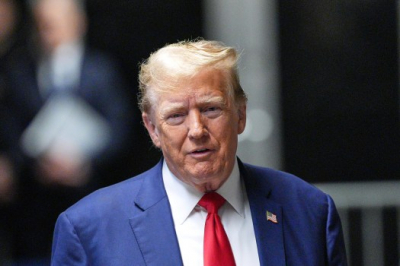
Columbia Campus in Turmoil: Pro-Palestinian Protesters Occupy Hamilton Hall Amid Suspension Backlash
In a bold act of defiance, pro-Palestinian demonstrators stormed into Hamilton Hall, the administrative heart of Columbia University, following the suspension of students who persisted in their pro-Gaza protests. The tumultuous occupation commenced under the shroud of midnight, prompting the university to implement stringent access controls, permitting only dorm residents and essential staff on campus.
With the academic semester winding down, the repercussions of the occupation reverberated through the university's infrastructure, pushing some graduate programs into remote modes of instruction. A stern memorandum from the administration underscored the campus-wide restrictions, signaling an indefinite standoff until circumstances allow otherwise.
Amidst the chaos, the resolute voices of the protesters echoed three uncompromising demands: divestment from Israel, financial transparency, and amnesty for all involved in pro-Palestinian advocacy. Asserting the righteousness of their cause, the coalition behind the encampment, Columbia University Apartheid Divest, declared that resistance is an inherent facet of the struggle for liberation.
As tensions escalated, scenes of confrontation unfolded, captured vividly in social media streams. Protesters wielding hammers shattered windows, fashioning barricades from metal chairs as they advanced their message through chants and banners. The symbolic resonance of their banners, bearing slogans like "STUDENT INTIFADA" and "Hind’s Hall," invoked the spirit of historic Palestinian resistance.
Inside Hamilton Hall, tables and chairs were repurposed to fortify the occupation, while accounts emerged of confrontations between protesters and those attempting to intervene. Amidst the turmoil, a facilities worker, reportedly held temporarily by the protesters, made a dramatic exit, encapsulating the intensity of the standoff.
The clash of ideals escalated further as student groups engaged in a digital battle, employing video filters to mock adversaries. Amidst the chaos, the essence of a university torn between academic freedom and ideological confrontation lay bare, as the fate of Hamilton Hall remained in the grip of those who dared to defy.
Columbia Campus Standoff Escalates: Students Defiant as University Resists Calls for Police Intervention
Amid escalating tensions, footage emerged showing at least one student being forcibly removed from the scene, highlighting the intensity of the confrontation. Despite the growing unrest, the New York Police Department (NYPD) confirmed its officers remained off-campus and had not received a request for intervention. Notably, no arrests had been made.
University officials, doubling down on their stance, pledged over the weekend not to involve law enforcement in dispersing the protests, fearing it would exacerbate the volatile situation. In a passionate plea, students urged Columbia administrators and trustees to refrain from replicating past tragedies, referencing historical incidents like the Kent State and Jackson State shootings.
The genesis of the pro-Gaza encampment traces back to April 17, coinciding with testimony from Columbia President Minouche Shafik before Congress on combating antisemitism. Within a span of thirty hours, the university suspended involved students and enlisted NYPD support, resulting in the arrest of over 100 individuals as the lawn encampment was dismantled. However, protesters swiftly regrouped and reinstated their presence on campus.
In a decisive turn of events, President Shafik announced on Monday that negotiations with student protesters had reached an impasse, affirming the university's stance against divestment from Israel. Despite clear directives to vacate the quad by 2 p.m. under threat of suspension, students remained steadfast, disregarding the ultimatum.
As tensions continue to mount, the Columbia campus remains a focal point of dissent and defiance, with the specter of further escalation looming large over the university administration and its resolute student body.
In the wake of President Shafik's declaration and the students' steadfast resistance, the Columbia campus stands at a crossroads, poised on the brink of further confrontation or potential reconciliation. As the standoff persists, the eyes of the nation remain fixed on the university, where the clash between principles of academic freedom, social justice, and institutional authority continues to unfold. The outcome of this struggle will not only shape the immediate future of Columbia University but also resonate far beyond its ivy-covered walls, serving as a potent reminder of the enduring power of student activism and the complexities of navigating contentious political issues within the confines of higher education. As negotiations falter and tensions simmer, the path forward remains uncertain, leaving the fate of the campus community hanging in the balance, awaiting resolution amidst the echoes of impassioned pleas and the clamor of dissent.






